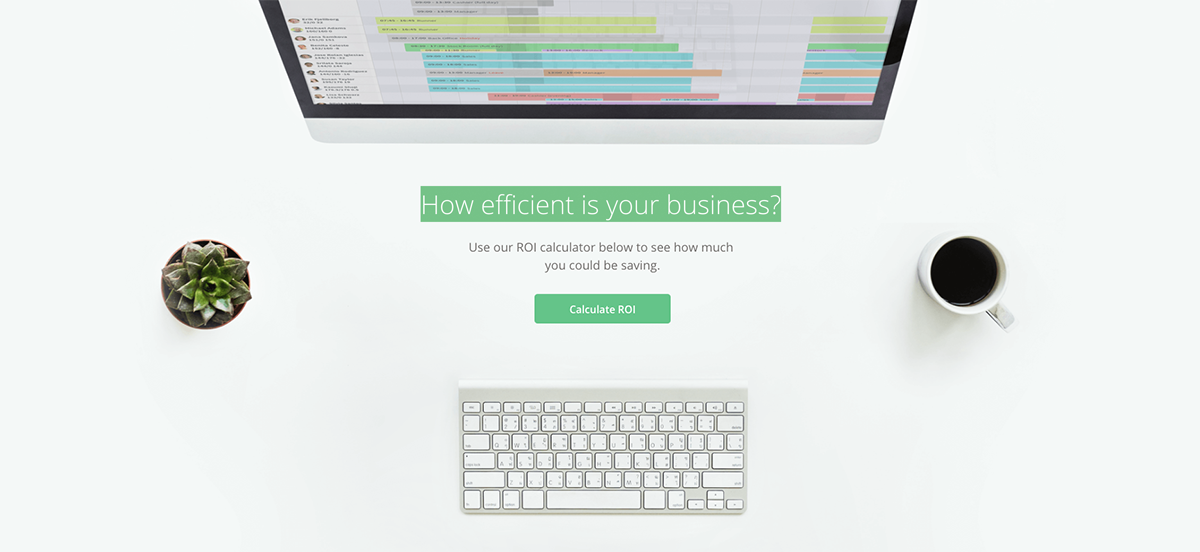Retail stores, restaurants, bars, gyms, coffee shops, museums and many more business, all face the similar problem of dealing with ‘dead time.’
This is time where the number of staff working out strip the demands of the business. For example, say you run a busy restaurant. You might schedule three staff to open it up. After they’ve completed their tasks to get the restaurant ready for service, there are no customers to serve, because your restaurant doesn’t get busier until later in the day. So your staff make themselves a coffee, they gossip and they wait for customers to arrive.
Fast-forward six hours later and you’re staff are being super-productive, working flat out. But your customers aren’t happy. In fact, some are leaving because there are no clean tables and the wait times on food are too long. Exactly the same will apply to all the other businesses mentioned above.
It’s easy to think this is just the way the business works but ask yourself, did you really need to have three people looking after the opening? Wouldn’t it have been better to have more people working when you’re at your busiest?
This effective allocation of your resources is an absolute must. By identifying your business’ dead hours (through measuring metrics like productivity and customer satisfaction), you can then make sure you have the right people, in the right place, at the right time - exactly like the pizza chain Papa John’s did.
Smarter scheduling is simple and by saving time through optimising and automating your scheduling you can save money, boost productivity and increase efficiency.
Doing all of this by hand and with multiple different systems can quickly lead to you and your managers becoming frustrated and dialing your stress levels up to maximum. There’s only so much you can do with pen, paper, and an Excel spreadsheet. A good business optimisation tool will automate your schedules based upon your forecasts, allow you to easily and effectively communicate with your staff, and will help power your payroll.
The good news for you is there are plenty of optimisation tools out there that take away this pain and do the hard work for you. In fact, according to industry research (TechNavio), businesses who use a workforce management solution as an optimisation tool save an average of 9 hours per week for each manager.
Not only does this automation save time for both managers and employees, it also means there’s less chance of human error causing something to go wrong. For example, you can avoid overstaffing, you can make sure you have no unused paid time at the end of each month (for salaried staff), you can schedule staff in line with their agreements and you can dramatically reduce overtime cost.
The most common processes which can be automated are: time and attendance, scheduling, budgeting and forecasting, absence management and labour analytics.
But how do you measure the success of using an optimisation tool and how do you know it’s delivering the returns you’re looking for?
Here are six essentials you need to measure to track the impact of optimising your business...
1. Labour cost
Cost of labour is often the biggest fixed cost on the balance sheet. With a modern, cloud-based workforce management solution you can see, in real-time, your actual labour costs compared with your budgeted costs. And because you have greater control over when and where people are working, it’s easy to reduce costs without sacrificing your service. If you haven’t seen it, we’ve put a guide together on the best ways to reduce labour cost which you can access here.
2. Scheduling changes
Do you know how many times your schedule is changed each month? With a workforce management system you’ll be able to track them and you should be aiming to reach a point where the changes made are minimal. As your use of the system matures you should see less changes being made after a schedule has been produced. This in itself will point towards both improved productivity and improved efficiency.
3. Time
Measure the time you spend doing specific tasks, especially scheduling. As stated above, we find on average a manager who creates schedules will save 9 hours a week once this process is fully automated. To measure this impact on your business you have to track your time to see where it’s being used. Better use of time is also a clear indicator of increased productivity.
4. Employee engagement
Employee engagement is another important metric all businesses can measure. Engaged employees will help your business improve customer satisfaction and will save you money as more engaged employees are more productive. For example, London City Airport saw the response rate of their annual employee survey double when it was communicated to their employees through the mobile app of their workforce management solution.
5. Staff retention
For many businesses, reducing staff turnover and improving retention is the main reason they decide to implement a workforce management solution and as such, measuring turnover is a must to gauge the impact the solution is havin
6. Forecast and budget accuracy
With a detailed forecast of future staffing requirements, planning and follow-up relating to budget becomes more accurate. Measuring the variance of the forecast to the actual results will show how accurate the forecast was. And we tend to find the longer a workforce management solution is used, the more accurate it becomes.
Why not see how much you could be saving with a cloud-based, mobile first workforce management solution? Try our Return on Investment Calculator to find out.
![<p data-pm-slice="1 1 []">Read more</p>](https://hubspot-no-cache-eu1-prod.s3.amazonaws.com/cta/default/1545537/interactive-303378350296.png)



